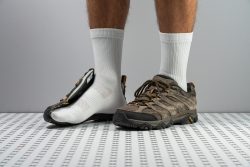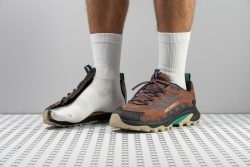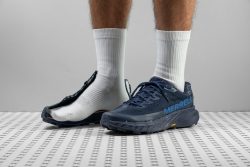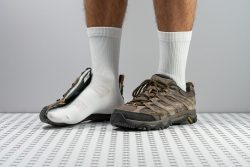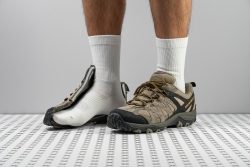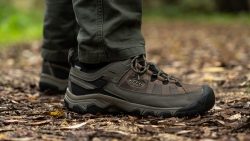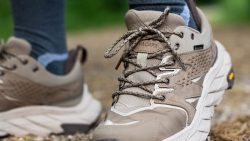7 Best Merrell Hiking Shoes in 2025
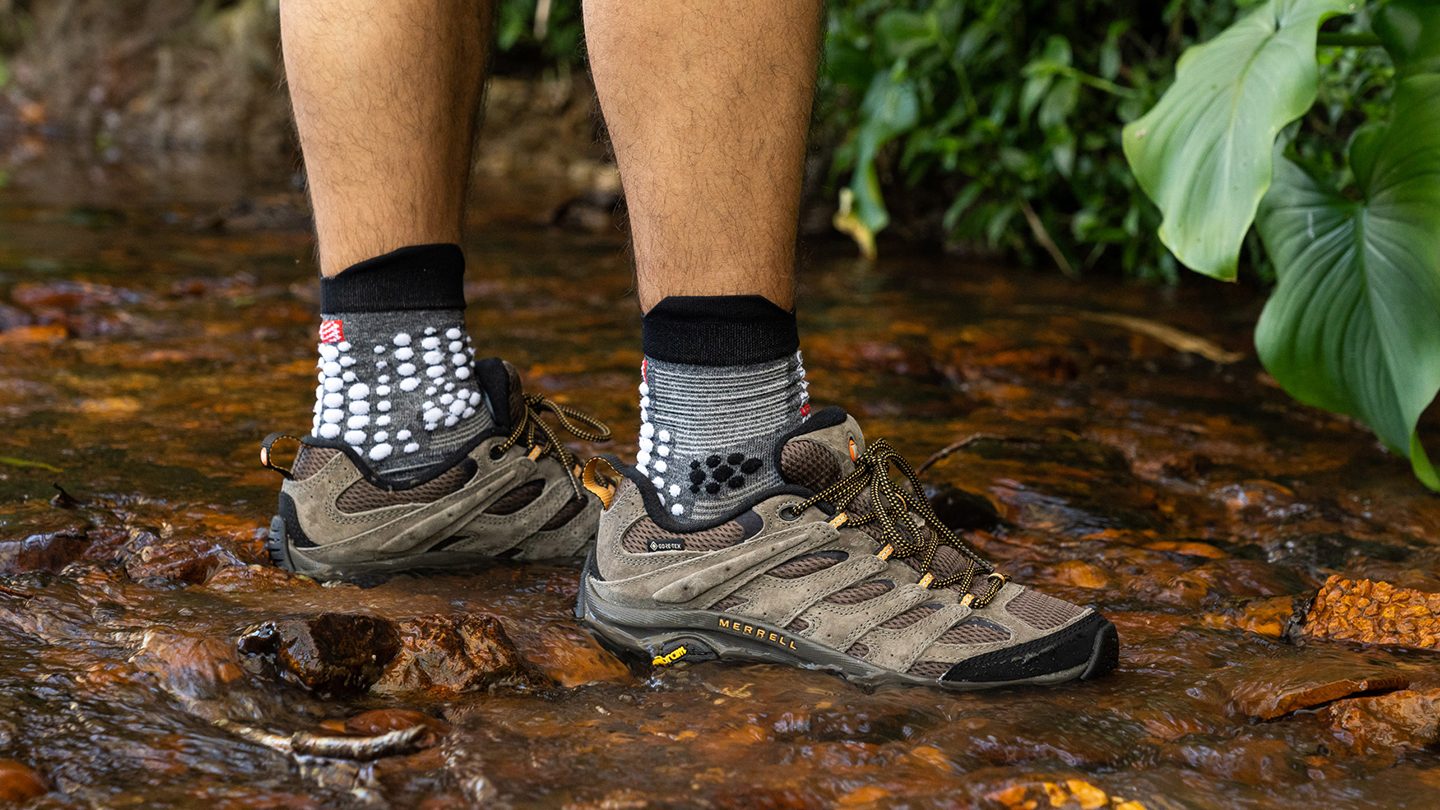
We buy shoes ourselves. We earn commissions when you buy through us, at no extra cost. Why trust us
Are you in search of a well-rounded hiker? Maybe something that can keep your feet well-ventilated? Or how about a hiking shoe that excels in the water? Whatever your fancy, we have a top pick waiting for you here.
We’ve thoroughly tested Merrell hiking shoes to help you pick the right one. We hiked in them, and we tested them top-to-bottom in our lab while doing the tests on breathability, durability, stiffness, and softness. Featured below are those that came on top in different categories.
How we test Merrell hiking shoes
Deciding on the best Merrell hiking shoes is no easy feat. That said, we at RunRepeat take such a challenge seriously. Here’s how we do it:
- We purchase Merrell hikers using our own money. This allows us to focus on delivering professional and objective reviews each time.
- We put every Merrell pair to the test by hiking in them on multiple occasions. We also use each one rigorously in the setting it is mainly built for.
- We measure over 20+ parameters in our lab and present the lab data in an understandable and comparable way. And to top it all off, we cut the shoes in half to disclose what makes up the footwear.
Best Merrell hiking shoes overall



































What makes it the best?
After extensive tests in the lab and hours spent hiking, we found that nothing can beat the Merrel Moab 3 GTX when it comes to comfort! From day one, the padded heel and thick 14.6 mm tongue ensured that we didn’t have to break it in.
We squeezed the padded heel counter in the lab and awarded it a 4/5 for stiffness. 5 being the stiffest, we found this stiff heel works well at keeping our feet from moving around in the shoe - bye-bye blisters!
The cushioned midsole kept a spring in our step while out hiking. In the lab, we applied a durometer and found the midsole measures 36 HA. 9% firmer than average, it kept our feet protected from sharp objects, while still giving that cushioned feel which kept us going all day.
The Gore-Tex membrane made sure that our feet didn't suffer in the rain, either. Together with a fully gusseted tongue, the waterproofing kept out the worst of the weather, and our feet remained bone dry.
Even in terms of flexibility, this shoe is a high achiever. Pushing it to 30°, we found that it remained 16.9% more flexible than most other hiking shoes! That means that it feels easy on the feet and avoids fatigue.
This hiking shoe is not the best choice for multi-day hikes and we don’t recommend it to hikers carrying heavy rucksacks. It lacks additional support to make it capable of dealing with hefty loads on uneven terrain.
Pros
- Superb day-one comfort
- Brilliant surface adhesion
- Supportive like a work shoe
- Remarkably durable
- A-grade waterproofing
- Sheds mud quite well
- Protective toe box
- Incredible overall quality
- Incredible overall quality
Cons
- Heavy for a low-top
- Subpar breathability
- Its shoelaces unravel often
- Minimal shock absorption
Merrel hiking shoes with the best shock absorption
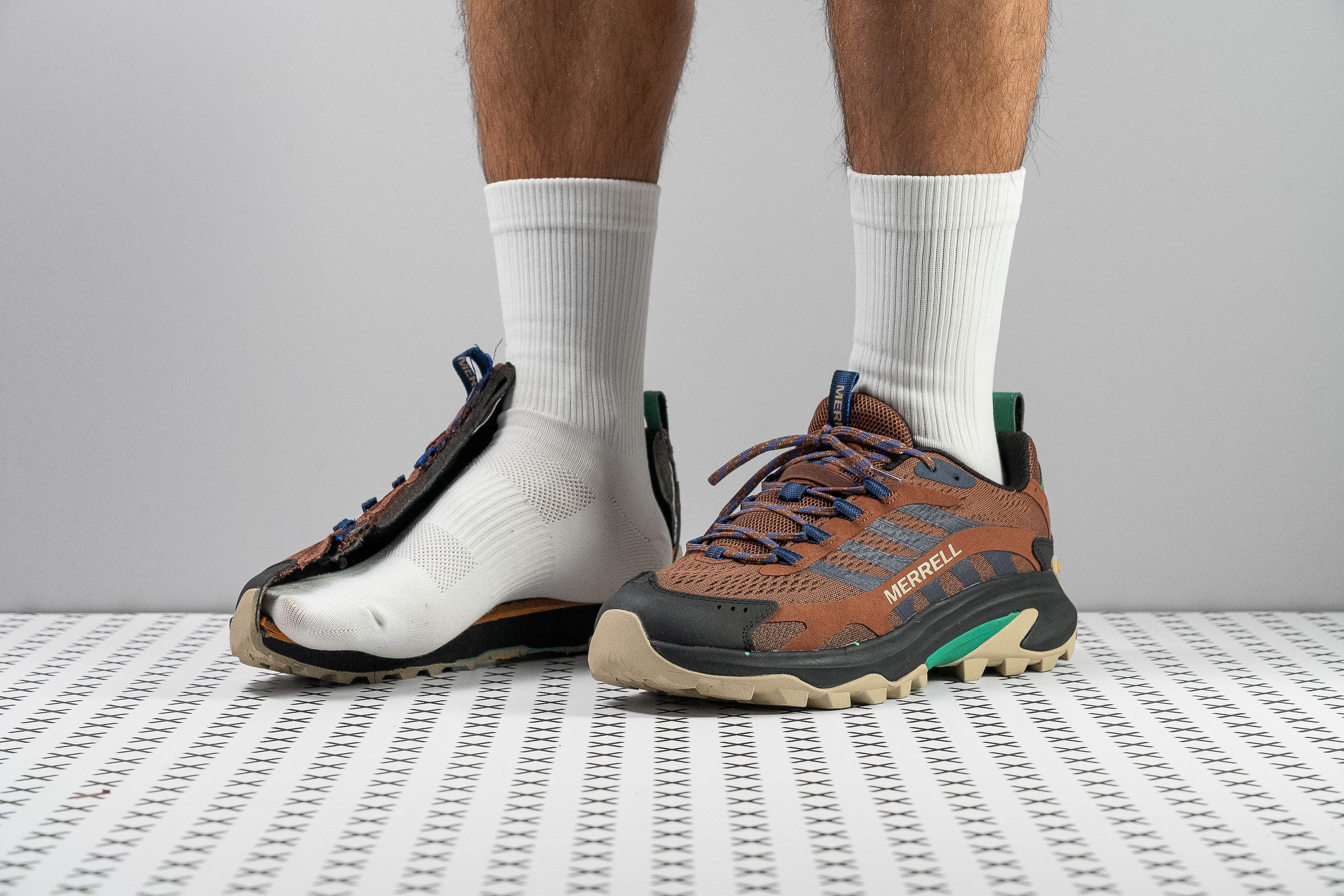























































What makes it the best?
We’re mindblown how Merrell packed so much comfort and support into the Moab Speed 2. Our lab confirms it’s our lightest hiking shoe yet at 11.6 oz (329g). Despite the 13.4% weight savings vs. average, it enchanted us with generous cushioning and solid footing, bringing a one-of-a-kind experience on course and topping the shock absorption category from the brand.
The shoe delivers generous cushioning, notably its 38.8 mm heel. It completely erases harsh debris underfoot and spoils our legs with plush foam, validated by its strong shock absorption score of 125 SA, 20.2% above average.
Each stride feels so light that this shoe makes us want to run! The rigid FlexPlate offers stability without sacrificing its natural feel. In our manual assessment, the shoe resisted our twists and earned the highest 5/5 torsional rigidity score. The stiffness helps maintain our balance and manages leg fatigue. But in terms of foot-bending, Moab Speed 2 emerged 16.9% more pliable!
Additionally, this Merrell features the well-known Vibram TC5+ outsole, studded with 3.7 mm lugs that bite the surface effectively. We had no issues with grip, allowing us to manoeuvre and speed through corners confidently.
With an advertised 10.0 mm heel drop, we were surprised that our calliper told another story. At a steep 15.0 mm, some hikers may find this too harsh.
Pros
- One of the lightest hiking shoes
- Plush and abundant cushioning
- Great support and stability
- Perfect grip for moderate terrain
- Excellent durability
- Breathable for summer
- Cosy step-in feel
- Two loops for easy on-off
Cons
- Frail inner lining
- Small debris gets inside
Best Merrell hiking shoes for technical terrain
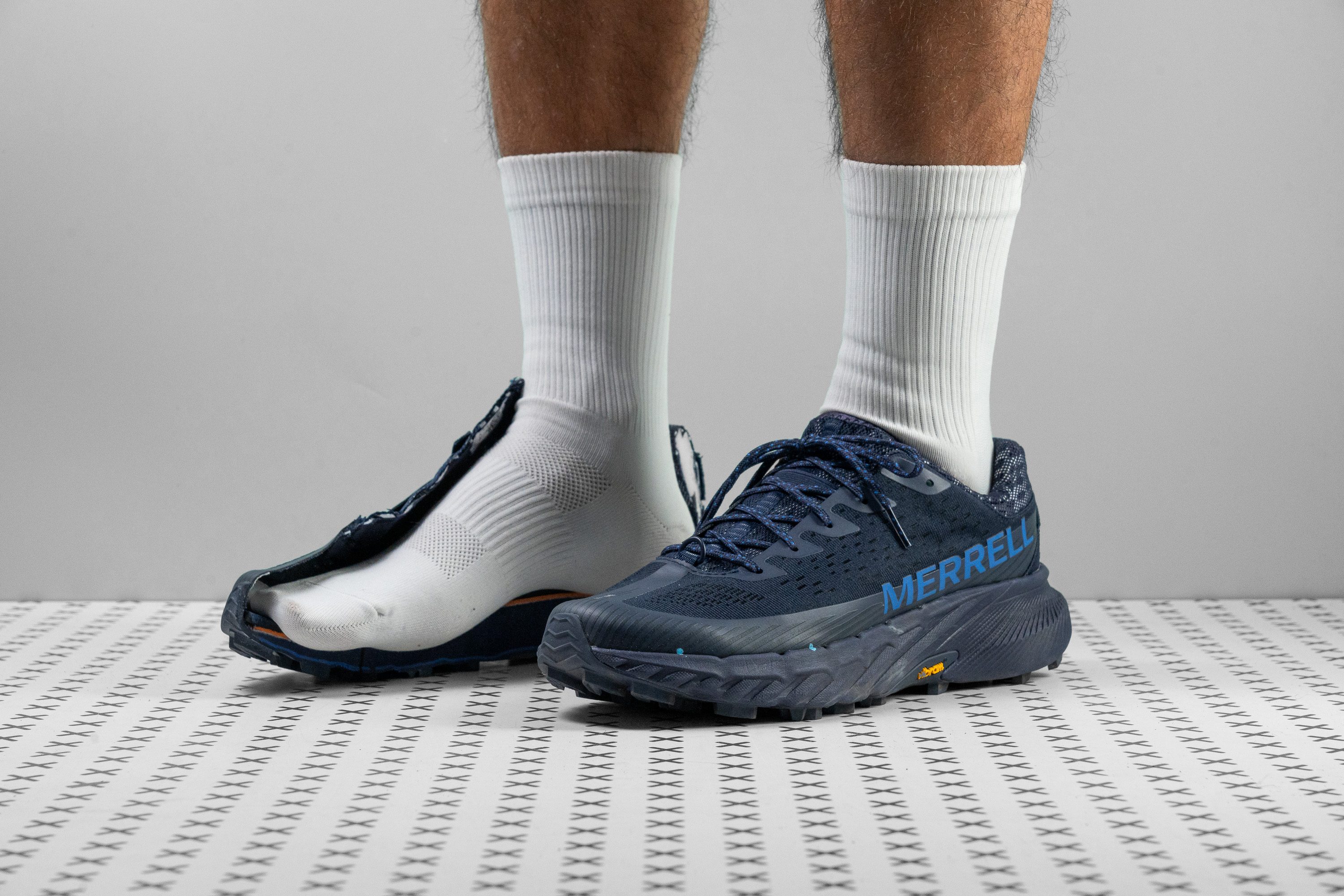















































What makes it the best?
With its locked-in ground contact and sure-footed sensation, the Agility Peak 5 is our top Merrell hiking shoe for technical terrain. It ensures peak agility through its light build, while keeping us safe with its Vibram Megagrip outsole, deep lugs, and stiff construction.
The Vibram Megagrip outsole proves its star status once again by delivering unwavering traction even when we trek through soft mud. It features deep 4.5 mm lugs, which are spaced efficiently to shed off loose soil. It inspires confidence together with the stable platform.
Agility Peak 5 anchors us to the ground through its high resistance to excess lateral movements. In the lab, it exceeded our current averages with ratings of 5/5 for torsional rigidity and 4/5 for heel counter stiffness. Combined, these features keep us centred within the shoe.
Agility Peak 5 doubles as a trail running shoe, which explains its light 10.2 oz (289g). It offers a significant 23.9% weight savings compared to the average hiking shoe, boosting its comfort for long hours on foot.
Unfortunately, it achieved its light build through streamlining the midsole and toebox. With narrow measurements, we suggest those with broad feet to look for more accommodating pairs.
Pros
- Easily handles tough trails
- Performs well on both downhills and uphills
- Extremely durable upper with numerous TPU reinforcements
- Suitable for year-round use
- Loads of recycled, eco-friendly stuff
- Wonderful for heel strikers
- Excellent all-terrain shoe
- Excellent all-terrain shoe
- Excellent all-terrain shoe
Cons
- Grips worse than expected
- Actual drop deviates significantly from what's stated
- Feels flat underfoot
- Narrow toebox
Best lightweight Merrell hiking shoes
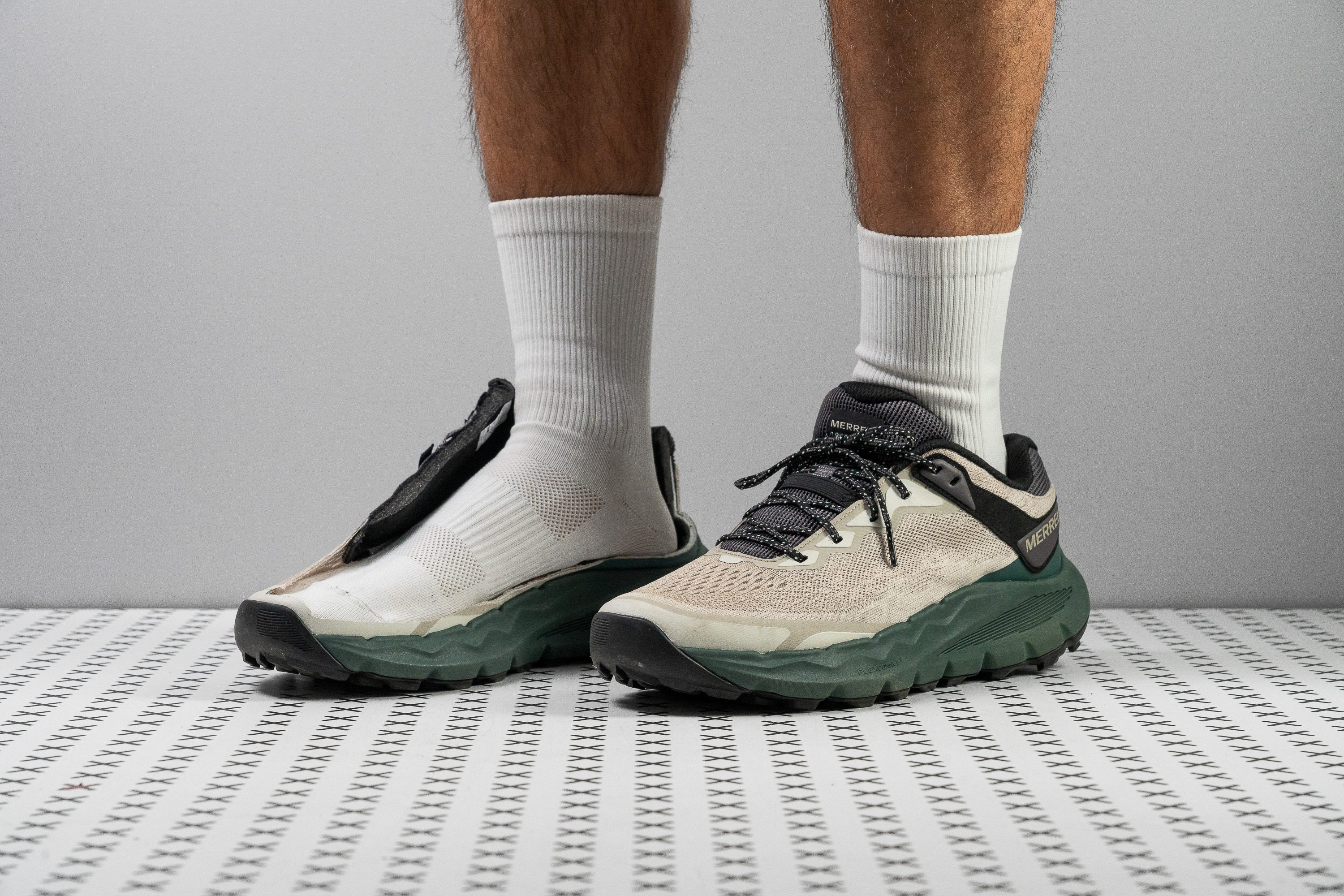













































What makes it the best?
The Nova 4 feels light and natural with every stride, delivering a refreshingly smooth ride enhanced by excellent ventilation. Our lab results back up what we experience in our treks, yet it ultimately stands out as the best lightweight Merrell hiking shoe in our roster.
We brought the shoe to our scales and discovered it’s only 9.6 oz (272g). It’s easy to speed hike or even break into a run, since Nova 4 weighs 28.4% lighter than the average hiking shoe in the lab.
Its minimal construction helps prevent the early onset of fatigue, together with its highly adaptive build, since we don’t have to fight much resistance to move. In our bend test, Nova 4 emerged 21.9% more flexible than average, enhancing a natural and relaxed trekking experience.
Wrapping up the overall pleasant experience is the breathable upper, with its thin mesh and oversized ventilation holes promoting air circulation. In our smoke test, we awarded it a strong 4/5 rating.
However, note that the outsole is slightly more vulnerable to wear compared to the average. Those seeking a hiking shoe with a rugged and sturdy rubber should go for another pair.
Pros
- Excellent trail shoe for beginners
- Ideal for heel strikers
- Noticeably lighter than Nova 3
- Strong breathability
- Comfortable, fully redesigned upper
- Versatile 4.0-mm lugs
- Works for hiking too
- Reasonable price
- Fully gusseted tongue
Cons
- Extremely low energy return
- High drop can feel awkward
- Weak heel padding
- Firm feel underfoot
Merrell hiking shoes with the best breathability
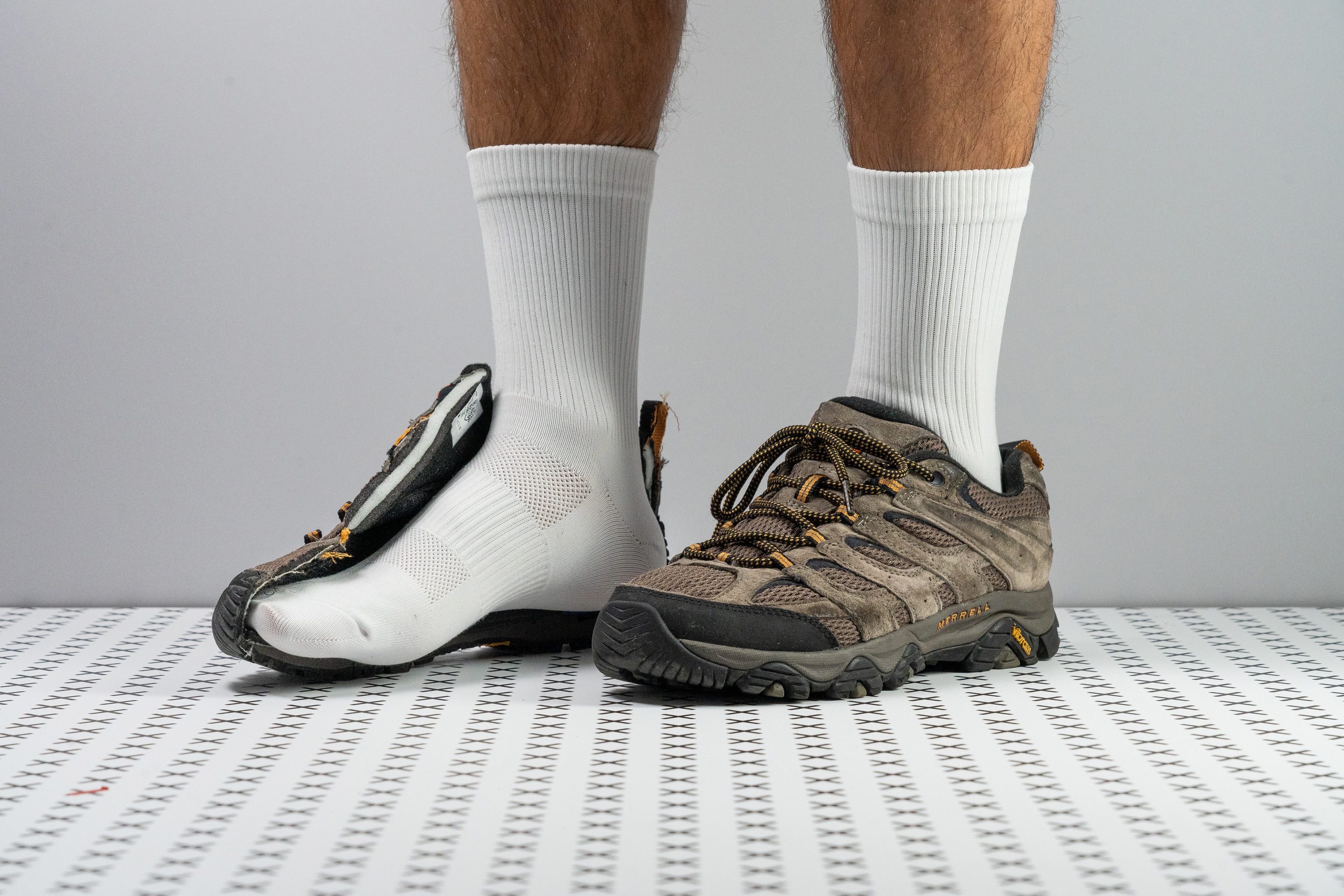


































What makes it the best?
We performed extensive lab analyses and took all our Merrell shoes on test hikes to find out which was the most breathable. The winner was hands down the Merrell Moab 3 which comes in top place for its superbly breathable upper, grippy outsole, and stability, making it an excellent choice for long day hikes in summer!
There is no doubt that the Merrell Moab 3 is a highly breathable shoe. Our microscope images showed large ventilation holes in the tightly woven fabric, and when we performed our traditional smoke test, it scored an impressive 4/5 for breathability. 5 is the most breathable, and the average for hiking shoes is 2.3, so the Moab 3 definitely classes as breathable!
We feel at home wherever we take the Moab 3, breezing along rocky and uneven trails without complaint. In the lab, we measured the lug depth as 4.8 mm, 0.5 mm deeper than average. The outsole is also slightly softer than average, with our durometer reading 85.4 HC compared to the average 86.1 HC. This added softness makes a big difference to the traction, improving our grip on hard, smooth surfaces in particular.
We experienced a great lockdown, helped by the gusseted tongue and medium-stiff heel counter. The nylon shank in the midsole gives the shoe good overall stability. We measured the width of the outsole at 108.8 mm at the forefoot and 86 mm at the heel. At around average for hiking shoes, the Merrell Moab 3 has a nice stable platform which makes it easy to trust our footing.
All this excellence comes at a price, and in the case of the Merrell Moab 3, that price is weight. The Merell Moab 3 weighs in at 16.2 oz (460g), 3.3 oz (165g) heavier than average. For hikers wanting to clock up a lot of mileage, we don’t recommend these shoes.
Pros
- Supremely comfy
- Zero break-in
- Boss-level support
- Solid grip on mixed terrain
- Stable platform
- Responsive cushioning
- Fits various foot shapes
- Cheaper than average
- Recycled materials
Cons
- Heavier than average
- Not quite sleek-looking
Best eco-friendly Merrell hiking shoes
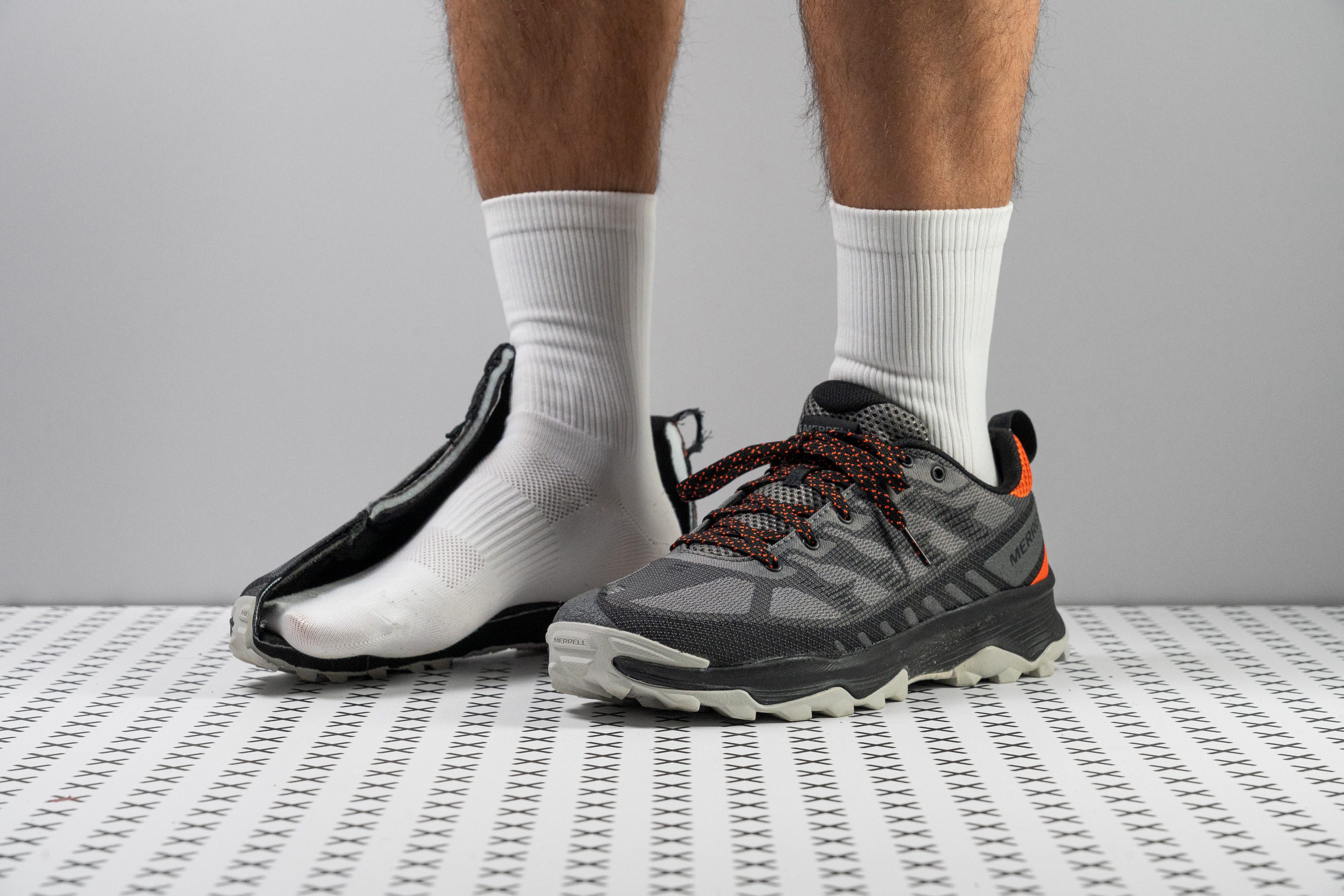













































What makes it the best?
The Merrell Speed Eco feels so nice on foot with its light, flexible, yet inherently stable build. Its grippy base kept us safe through wet, dry, loose, or compact ground. Analysing further in the lab, we validated that it’s mostly made of recycled materials, so we ranked it as our best eco-friendly Merrell hiking shoe.
It feels good to support sustainable causes, especially when it feels so delightful on foot! Eco Speed kept us nimble with its airy sensation, keeping the experience easy and natural. Our scales reveal it’s only 11.6 oz (329g), 13.0% lighter than average. In our bend test, it also emerged 22.4% more malleable than average, confirming it’s easy to manoeuvre.
The firm midsole and robust lugs kept us surefooted in the mountains. Using our durometer, we found the foam to be a firm 30.0 HA. Meanwhile, the lugs measure 3.8 mm deep and are variously shaped and positioned to give us more control on different surfaces and elevations.
Unfortunately, the outsole disintegrated in our Dremel test, which tells us Eco Speed isn’t the most durable pair. We recommend sticking to well-maintained trails when using this pair.
Pros
- Balanced ground feel and impact protection
- Feels lively and responsive underfoot
- Firm and stable platform
- Notably lighter then average
- Highly durable upper mesh
- Affordable price point
- A tonne of recycled materials
- Fits true to width
- Doesn't get any firmer in cold
Cons
- Lacks breathability
- Frail inner lining
- Outsole rubber wears easily
- Tongue is not gusseted as promised
- Not grippy on wet rocks
Best budget Merrell hiking shoes
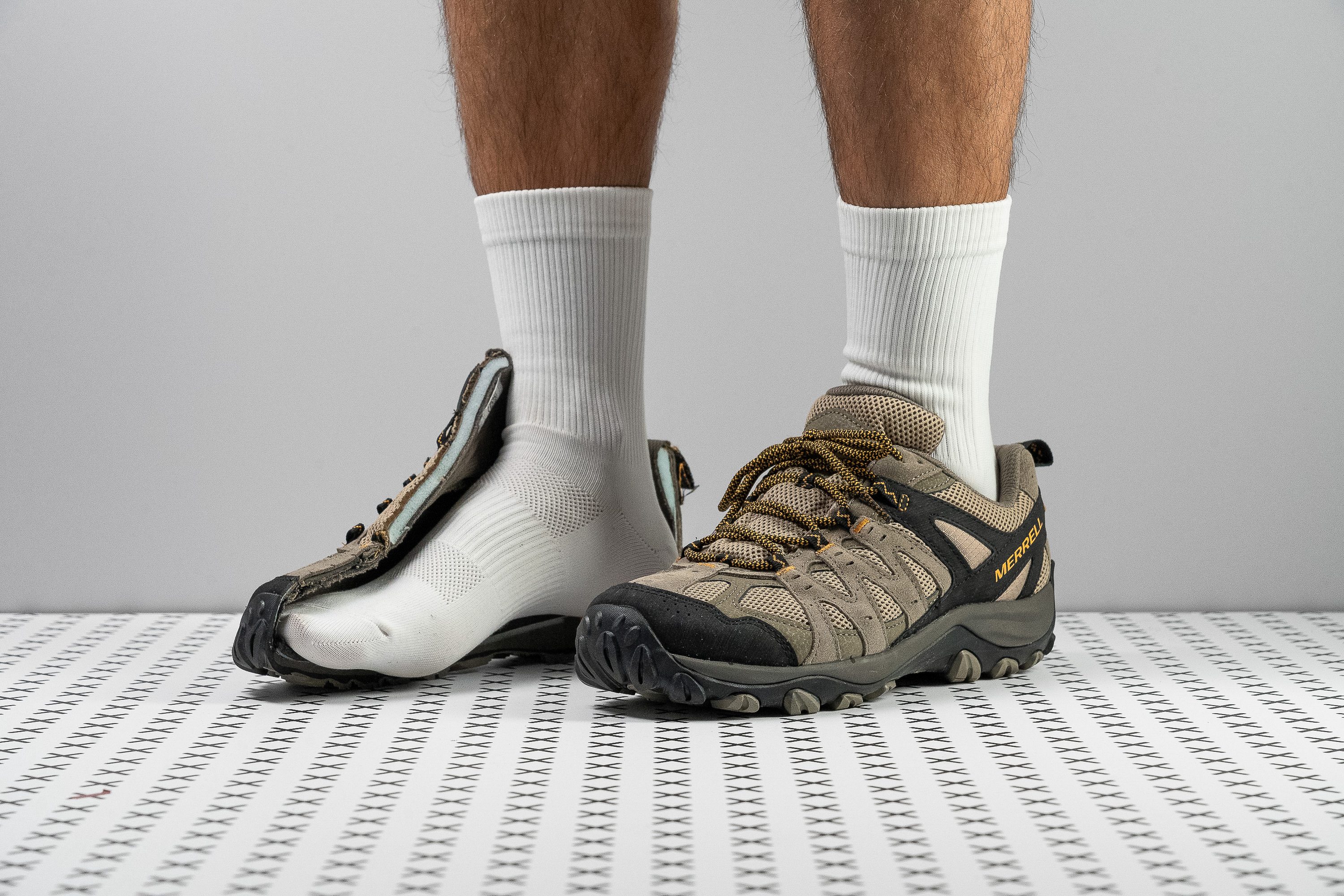












































What makes it the best?
Blending flexibility and support seamlessly, we found the Merrell Accentor 3 versatile and comfortable. Lab evaluation reveals its firm midsole creates a stable ride, while its roomy fit enhances comfort. The average hiking shoe in the lab costs £140, while Accentor 3 is only £100, making it our best budget pick in Merrell’s hiking category.
The Accentor 3 offers generous room for toe splaying, evidenced by how all our toes could relax freely. We created a gel mould to measure the toebox and recorded a width of 74.6 mm. For reference, the average is only at 72.5 mm, making this shoe kinder to square-shaped or swollen feet.
The midsole offers enough cushion but highlights ground feel in its moderate 30.8/16.7 mm stack. We recorded a below-average shock absorption of 95 SA, which shows its emphasis on surface feedback and stability.
The midsole also includes a nylon shank under our arches for added support during long treks. Thankfully, the shoe still feels easy to manoeuvre as it emerged 23.5% more pliable than average in our bend test. This flexibility also boosts comfort for long hours of wear and versatility for casual wear.
However, its well-insulated upper only provides comfort for cold weather. Those who don’t want to overheat in hotter seasons should find a more breathable pair.
Pros
- Stellar support
- Amazingly comfortable
- Performs well in the cold
- Can gobble up miles
- Versatile grip for moderate terrain
- Alleviates foot pain
- Fits like a glove
- Roomy and durable toebox
- Very easy to put on
- Budget-friendly
- Sustainably made
Cons
- Lacklustre breathability
- Could be lighter
- Unruly laces
Merrell has been making high-quality performance gear since 1981. What started as a business primarily focused on designing and manufacturing hiking boots has developed into one of the industry’s most trusted brand names, especially regarding hiking shoes.
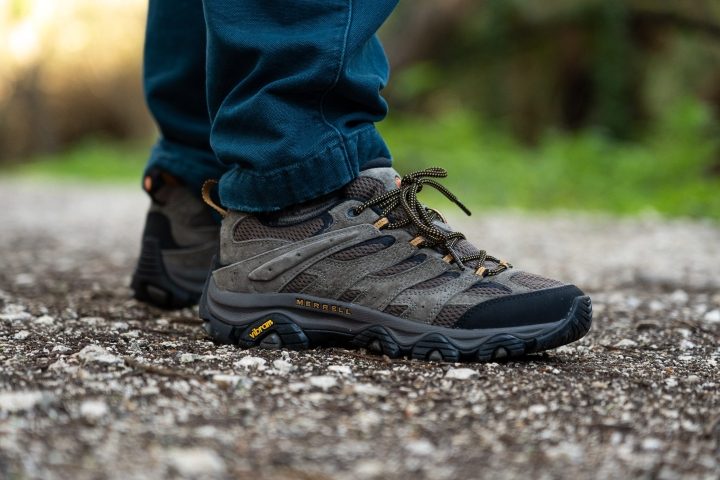
Core Components of Merrel Hiking Shoes
- Durable and long-lasting materials
- Available weatherproofing
- Supportive and cushioning midsoles
- Reliable traction for off-pavement travel
- Low-cut design to reduce bulkiness without losing performance
Durable materials and construction of Merrell hiking shoes
The durability of Merrel’s hiking shoes is related to material choice, the technology used, duration of use, terrain type, and how the shoes are stored.
Regarding materials used in the upper of the shoe, you will likely encounter leather, Nubuck leather, or synthetic materials. Most of the time, synthetic materials are more prone to abrasion than leather. However, synthetic materials continue to get stronger.
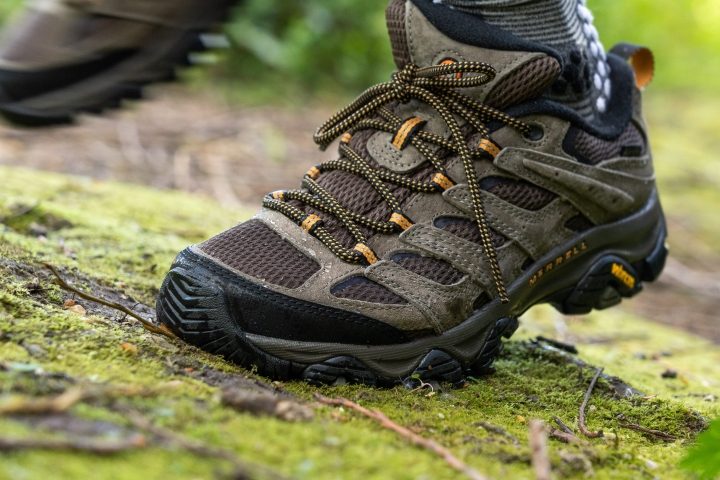
Toe bumper technology is a critical component of a shoe’s durability. The fronts of our shoes go through intense wear and tear on the trail. As a result, separating between the upper and midsole or outsole is a common failure point. Toe caps help prevent this, like those on the Merrel Moab 3.
Breathable and waterproof options from Merrel
Breathability of a shoe is the result of the materials used in its construction. Typically, synthetic nylon and mesh materials have the best breathability. On the other hand, materials like full-grain and nubuck leather tend to breathe less.
Here is a video illustrating the difference between the breathable Moab 3 and its waterproof GTX version.
Each Merrell hiking shoe reviewed in this article is made with synthetic materials or a mix of synthetic and leather. Synthetic materials are popular in hiking shoes because of their ability to breathe.
A shoe with good breathability will allow your feet to remain cool, not overheat, and let moisture (sweat) evaporate. As a result, your feet remain dry and more comfortable for extended periods.
Gore-Tex (GTX) membrane in Merrell
For the most part, a shoe loses some breathability when an additional waterproof membrane is added to the upper’s interior. This makes sense because if the membrane is supposed to keep water and moisture out, it will also lock it in.
With that said, Gore-tex is one of the best fabrics for doing both– keeping water out of your shoe from rain and other forms of precipitation while letting heat escape and moisture evaporate from within.
Merrel’s cushioned underfoot support
Midsoles are all about cushioning. In particular, the cushioning of a midsole is responsible for shock absorption. A shoe with poor cushioning does not absorb shock well, leading to discomfort and injury.
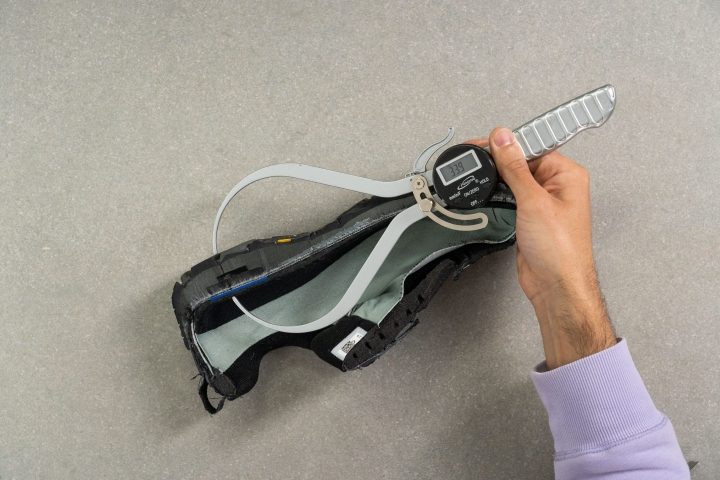
On the other hand, a cushioning system that is functioning correctly will lengthen the impact duration as your foot comes into contact with the ground. A longer, more cushioned impact transmits less shock load to your musculoskeletal system.
Traction is carefully tested
Effective traction is a critical component of hiking shoes. To measure traction, shoe manufacturers like Merrell carry out tests to measure the coefficient of friction and slip resistance.
The coefficient of friction is a number between zero and one. The closer the value is to one, the less slippage. On the other side of the spectrum, if the coefficient of friction is close to zero, more slippage will occur.
The depth of lugs is also important for tacking loose and wet terrain. Having measured the lugs of multiple Merrell hiking shoes, we found that they average 4.5-5 mm. This is an excellent length for an-around hiking shoe.
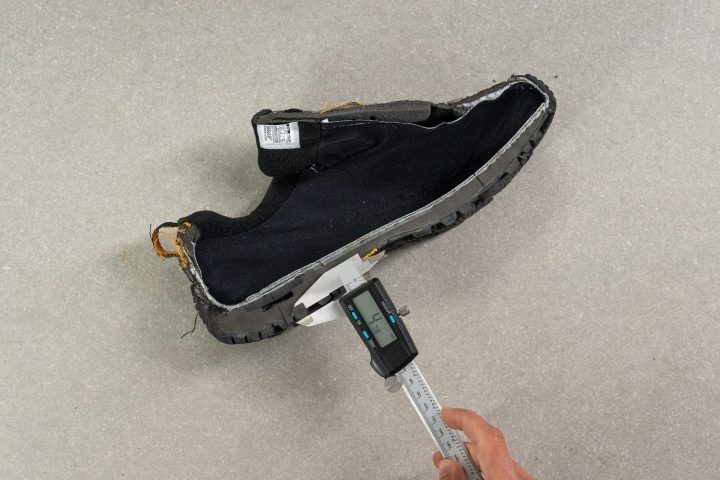
Arch support in Merrell’s hiking shoes
The stability of Merrell’s hiking shoes comes from their cushioning, medial arch support, and curved last. Typically, a stable hiking shoe combines two types of foam EVA and PU, to create stiffness. In most cases, stiffer hiking shoes are more stable.
You can check the stiffness and stability of a Merrell hiking shoe by squeezing around the shoe's heel and twisting the shoe. A hiking shoe that resists compression and twisting is considered more stable.
It is a common trend to believe that support, specifically ankle support, comes from the high-top cuff of hiking boots. Consequently, it’s common to believe that Merrell hiking shoes do not provide adequate stability because they have low-cut cuffs around the ankle. However, this is simply not true.
Low-cut Merrell hiking shoes still offer stability
High cuffs provide stability, but only when the cuffs are noticeably stiff. If the cuff is soft and flexible, it may not provide any extra stability.
On the contrary, Merrell hiking shoes provide stability through the cushioning and stiffness of the midsole. Many hiking shoes provide excellent stability despite not having high-top cuffs.
One way hiking shoe manufacturers do this is by incorporating a shank into the midsole.
The shoe’s shank is a material sandwiched between the insole and the midsole. Think of the shoe’s shank as a backbone responsible for adding support.
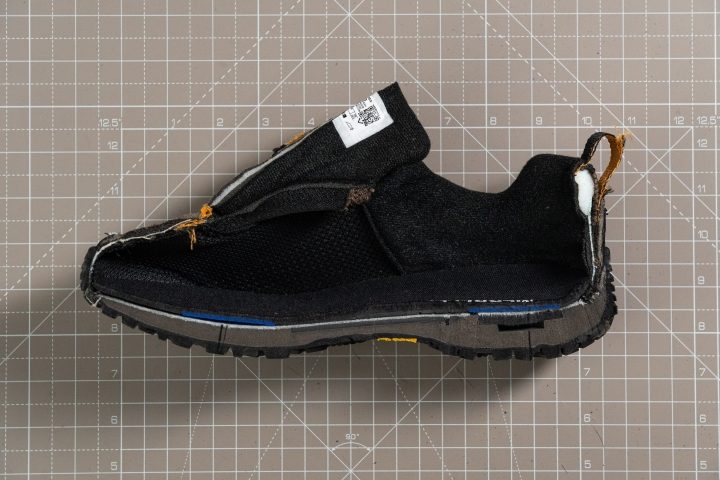
Merrell hiking shoes vs. boots
As hiking shoe designs and technology improve, more avid hikers are transitioning away from hiking boots. This is true for fans of Merrell footwear, also. Instead, they are hitting the trails with Merrell hiking shoes. And for good reasons.
For one, Merrell hiking boots are heavier than their shoe-like counterparts. The extra weight of hiking boots comes from their bulky design. Surprisingly, in some cases, the extra material doesn’t make a better shoe.
| Average weight | |
| Merrell hiking shoes | Merrell hiking boots |
| 12.8 oz (363g) | 19.4 oz (550g) |
Some hiking boots can also be more expensive than hiking shoes. Purchasing Merrell hiking shoes is a great way to get all the traction and support you love about hiking boots for a more economical price.
Lastly, some hiking boots can be a bear to break in. This is particularly true for hiking boots that utilise full-grain leather. Yes, full-grain leather is durable and relatively water resistant, but the break-in period can be a hassle. Luckily, most of Merrell’s hiking footwear utilises synthetic leather, which is more supple and breaks in better.
On the contrary, some hiking shoes are comfortable and ready to go straight out of the box.
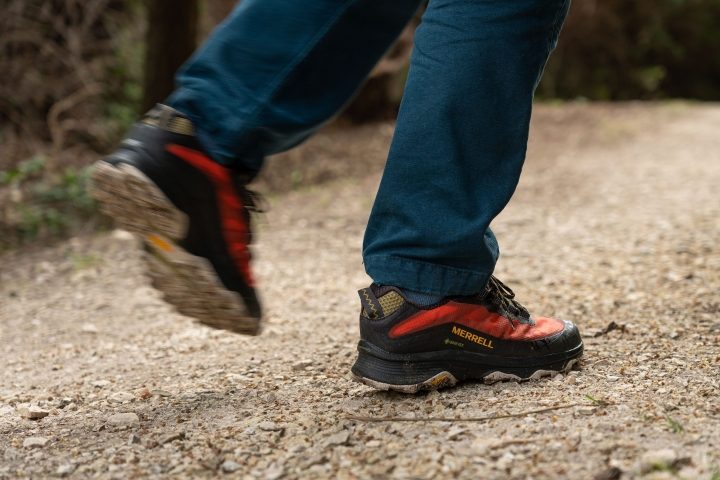
Frequently asked questions
Is Gore-Tex the only type of waterproof material in Merrell hiking shoes?
No, Gore-tex is not the only waterproof fabric used in Merrel hiking shoes. Merrell uses their proprietary M-Select Dry technology in some hiking shoes. However, Gore-tex does tend to be the most popular material. For example, the Merrell Moab 2 GTX utilises a Gore-tex membrane on the interior of the shoe.

Which Merrell hiking shoe is best for speed hiking?
The Merrel MQM Flex 2 GTX is the best Merrell hiking shoe for speed hiking. The MQM Flex 2 GTX is super lightweight, has excellent traction, and is incredibly comfortable on the trail.
Which Merrell hiking shoe is best for water hiking?
The Merrell All Out Blaze Sieve is the best Merrell hiking shoe for water hiking. The shoe is lightweight and has impressive traction underfoot, even when wet or underwater. We also like the All Out Blaze Sieve for water hiking because of the protective toe cap. Your toes will feel protected even if you can’t see through the water.
Which Merrell hiking shoe is the best for my budget?
We understand that hiking shoes can be expensive. The good news the investment is typically worth it. However, if you can’t get yourself to shell out over £100 for a pair of hiking shoes, the Merrell Alverstone will be best for your budget.
Which Merrell hiking shoe is most comfortable?
To put it simply, comfort is subjective. In other words, what is comfortable for one person may not be comfortable for someone else.
The comfort someone receives from a shoe will depend on how that shoe interacts with the specific characteristics of their feet.
So to find out which Merrel hiking shoe is most comfortable, you'll have to try some on and tell us. You’re in charge of this one.

